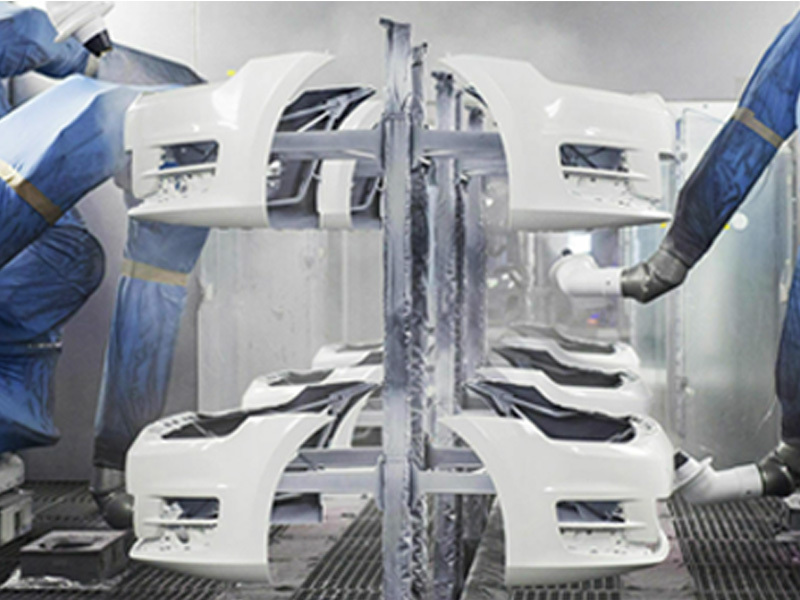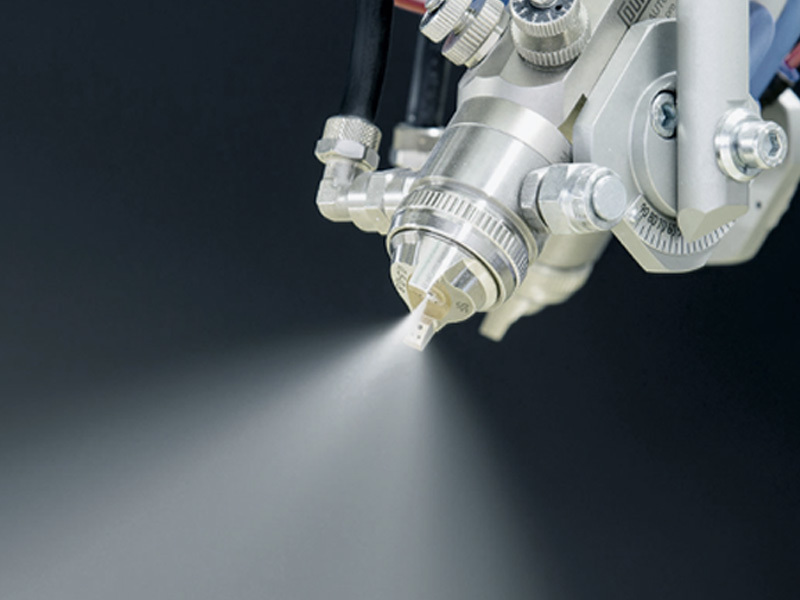Comprehensive Guide to Safety Standards and Regulations for Industrial Low Pressure Spray Lines
Release time:
2025-07-04
Understanding Safety Standards and Regulations for Industrial Low Pressure Spray Lines In the realm of industrial manufacturing, safety is not just a priority; it is a necessity. **Low pressure spray lines** play a critical role in various applications, including coating, painting, and surface finishing. To mitigate risks and ensure compliance with industry standards, it is crucial for organizatio

Understanding Safety Standards and Regulations for Industrial Low Pressure Spray Lines
In the realm of industrial manufacturing, safety is not just a priority; it is a necessity. **Low pressure spray lines** play a critical role in various applications, including coating, painting, and surface finishing. To mitigate risks and ensure compliance with industry standards, it is crucial for organizations to understand the safety regulations that govern the use of these systems.
Table of Contents
- 1. Introduction to Low Pressure Spray Lines
- 2. Importance of Safety Standards in Spray Applications
- 3. Key Regulatory Frameworks Governing Spray Lines
- 4. OSHA Regulations for Spray Operations
- 5. Environmental Considerations and Compliance
- 6. Hazard Assessment and Risk Management in Spray Operations
- 7. Best Practices for Safety in Low Pressure Spray Lines
- 8. Training and Employee Engagement for Safety Compliance
- 9. Conclusion
- 10. FAQs
1. Introduction to Low Pressure Spray Lines
Low pressure spray lines are systems designed to apply coatings at lower pressure levels compared to high-pressure alternatives. These systems are prevalent in industries such as automotive, aerospace, and manufacturing, where precision and quality in finishing are paramount. Utilizing lower pressure not only reduces the risk of overspray but also minimizes the environmental impact by controlling the distribution of chemicals.
Understanding the Components of Low Pressure Spray Lines
A typical low-pressure spray line consists of several key components, including:
- **Spray guns**: The essential tool for applying coatings.
- **Compressors**: Deliver air at controlled pressure to atomize the paint.
- **Hoses**: Transport the paint from the reservoir to the spray gun.
- **Filters**: Ensure that the paint is free from contaminants, providing a clean finish.
2. Importance of Safety Standards in Spray Applications
The significance of adhering to safety standards in low pressure spray operations cannot be overstated. These standards protect workers from potential hazards associated with chemical exposure, fire risks, and environmental contamination. Implementing safety protocols not only ensures compliance but also enhances operational efficiency and promotes a culture of safety in the workplace.
Minimizing Health Risks
The use of chemicals in spray operations can expose workers to various health risks, including respiratory issues and skin irritation. Adhering to safety standards helps mitigate these risks by ensuring proper ventilation, personal protective equipment (PPE), and training.
3. Key Regulatory Frameworks Governing Spray Lines
Understanding and navigating the regulatory landscape is foundational for any organization operating low pressure spray lines. Key regulatory bodies and frameworks include:
- **Occupational Safety and Health Administration (OSHA)**: Sets and enforces workplace safety standards.
- **Environmental Protection Agency (EPA)**: Regulates emissions and environmental impacts of spray operations.
- **National Fire Protection Association (NFPA)**: Provides guidelines for fire safety in industrial environments.
Compliance with Local and International Standards
Organizations must also be aware of local regulations and international standards such as ISO certification, which can further enhance operational credibility and safety compliance.
4. OSHA Regulations for Spray Operations
OSHA's regulations for spray operations are critical in ensuring the safety of employees. Key regulations to consider include:
- **General Industry Standards (29 CFR 1910)**: Establishes safety measures for various industrial operations.
- **Hazard Communication Standard (HCS)**: Requires proper labeling and safety data sheets (SDS) for hazardous chemicals.
Personal Protective Equipment (PPE) Requirements
OSHA mandates specific PPE for workers involved in spray operations, including respirators, goggles, gloves, and protective clothing to shield against chemical exposure. Proper training in the use and maintenance of PPE is essential to reduce workplace injuries.
5. Environmental Considerations and Compliance
Environmental compliance is integral to the operation of low pressure spray lines. The EPA regulates emissions of volatile organic compounds (VOCs) and hazardous air pollutants (HAPs) that can arise from spray operations. Organizations must implement measures to reduce these emissions and comply with Clean Air Act requirements.
Implementing Best Practices for Environmental Protection
- **Use of Low VOC Coatings**: Transitioning to low VOC or water-based coatings can significantly reduce environmental impact.
- **Proper Waste Disposal**: Establishing protocols for the disposal of hazardous waste materials ensures compliance with environmental regulations.
6. Hazard Assessment and Risk Management in Spray Operations
Conducting a thorough hazard assessment is crucial for identifying potential risks associated with low pressure spray lines. This assessment should cover:
- **Chemical Exposure**: Evaluate the risks of inhalation or skin contact with hazardous substances.
- **Fire and Explosion Risks**: Assess the potential for ignition sources and implement measures to mitigate these risks.
- **Mechanical Hazards**: Identify risks associated with equipment failure or mishandling.
Developing a Risk Management Plan
A robust risk management plan should include:
- **Emergency Response Procedures**: Establish clear protocols for responding to accidents or spills.
- **Regular Safety Audits**: Conduct periodic safety audits to identify and rectify compliance gaps.
7. Best Practices for Safety in Low Pressure Spray Lines
To ensure the safety of workers and compliance with regulations, organizations should adopt best practices that encompass every aspect of spray operations.
Regular Training and Certification
Regular training sessions for employees on safety protocols, equipment handling, and emergency procedures are essential. Certification programs can enhance knowledge and ensure that workers are equipped to handle hazardous materials safely.
Implementing Safety Checklists
Utilizing safety checklists before starting operations can help identify potential hazards and ensure compliance with safety standards. Checklists should cover equipment inspections, PPE availability, and necessary permits.
8. Training and Employee Engagement for Safety Compliance
Employee engagement is crucial for fostering a culture of safety within the organization. Involving employees in safety discussions and decision-making can lead to improved compliance and a sense of ownership towards safety practices.
Creating a Safety Committee
Establishing a safety committee that includes representatives from various departments can facilitate open communication about safety concerns and encourage collaborative problem-solving.
9. Conclusion
Navigating the landscape of safety standards and regulations for industrial low pressure spray lines is a multifaceted challenge. By understanding the importance of regulatory compliance, implementing best practices, and fostering a culture of safety, organizations can significantly reduce risks and enhance operational efficiency. Continuous training, employee engagement, and adherence to environmental guidelines will not only ensure compliance but also promote a safer and more productive workplace environment.
10. FAQs
What are the primary safety standards for low pressure spray lines?
The primary safety standards include regulations set by OSHA, EPA, and NFPA. These standards govern the use of equipment, chemical exposure, and environmental impact.
How can organizations ensure compliance with OSHA regulations?
Organizations can ensure compliance by providing regular training, using appropriate PPE, and conducting thorough safety audits.
What is the significance of hazard communication in spray operations?
Hazard communication ensures that employees are informed about the risks associated with chemicals they handle and know how to protect themselves.
What role does employee training play in safety compliance?
Employee training is vital for equipping workers with the knowledge and skills to operate safely and respond effectively to emergencies.
How can companies reduce environmental impact from spray operations?
Utilizing low VOC coatings, proper waste disposal methods, and implementing emission control technologies can significantly reduce environmental impact.
By understanding and adhering to the safety standards and regulations governing low pressure spray lines, organizations can protect their workers, comply with legal requirements, and contribute to a healthier environment.











